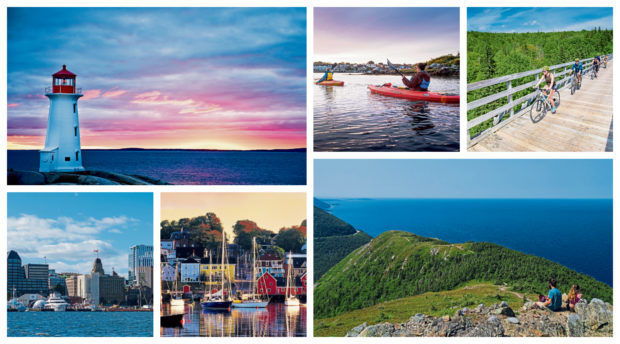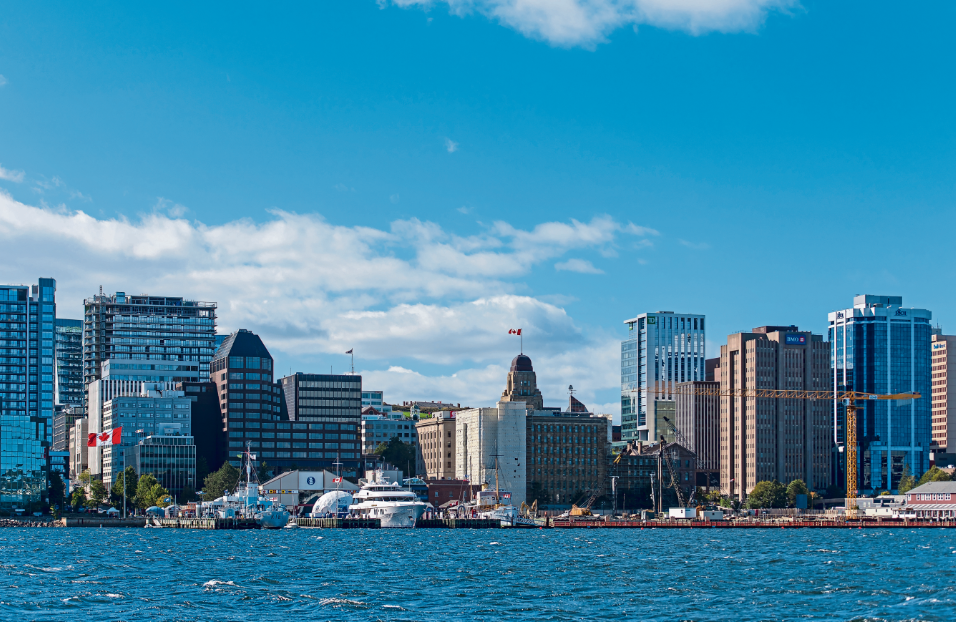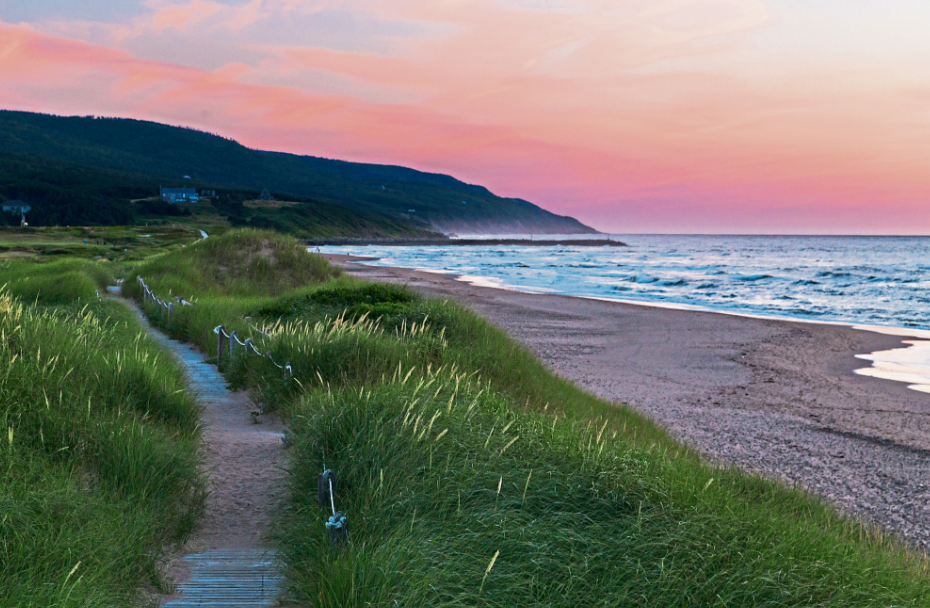Something unforgettable happens as I stroll along a vast sandbank in the middle of a seemingly quiet river in Nova Scotia.
The tide surges in from up ahead like a mini tsunami and within minutes it’s a giant, swirling hot tub. My fellow rafters and I are now back in the small boat and our helmswoman is motoring on into waves which are swelling and crashing over our heads.
Amid the excitement, she explains to us that about 100 billlion tonnes of seawater is currently rushing in from the adjoining Bay of Fundy and reversing the natural flow of its tributary rivers – a phenomenon which happens every six hours in this part of the world. It provides a truly exhilarating experience known as tidal bore rafting.
And adventure is just one of Nova Scotia’s many attractions. There are beautiful seaside towns coloured with brightly painted homes, long walks along rocky shores and sandy beaches, maritime museums and countless restaurants serving some of the freshest lobster you will ever taste.
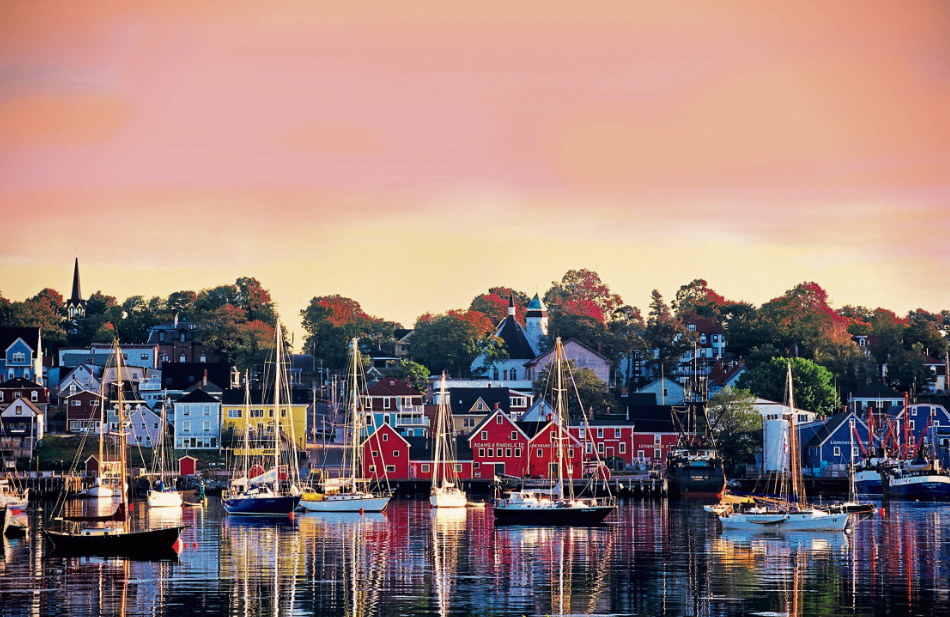
I am visiting the Canadian province for a five-day road trip in the company of another journalist. The first stop is Halifax, a city of just over 300,000 inhabitants.
At first glance there’s not much more to it other than grey brick and steel. But look past it and you’ll find an array of cultural spots, seafood restaurants and visitor attractions steeped in maritime and military history.
And pedestrians completely rule. Drivers will stop if you stand close enough to a road and simply look like you might want to cross. It typifies the people here – incredibly polite, welcoming and friendly.
A day before my fellow traveller from London arrives, I take advantage of a calm, sunny evening and walk up to the hilltop citadel. It’s similar in appearance to Fort George and was established in 1749 and used for generations to defend Halifax from a variety of enemies.
Reflected by the Latin meaning of its name, Nova Scotia boasts many historic and social connections to Scotland, especially the Highlands. Most notably when the ship Hector set sail from Loch Broom near Ullapool in 1773, carrying nearly 200 people looking to escape their lives which were plagued by hunger and famine and intolerable rent increases.
They left thinking their journey would take a few weeks and they’d soon carve out a better life for their families. Instead, they found themselves on a perilous 11-week journey mired by dysentery, smallpox and starvation. The town of Pictou is where you’ll find the Hector Heritage Quay, a living history museum complete with a life-size replica of the ship.
While in Halifax, it’s worth visiting the Canadian Museum of Immigration at Pier 21, part of a huge boardwalk along the waterfront which is home to vibrant restaurants, bars, art works and museums.
Pier 21 was the gateway which more than a million people came through between 1928 and 1971.
It was also the last place 500,000 military personnel saw before leaving to fight in the Second World War. Take the guided tour to better understand some of their individual stories.
Just a short walk away is the Maritime Museum of the Atlantic, home to the world’s finest collection of wooden artefacts from the Titantic. Halifax was the closest port to the 1912 tragedy and where much of the wreckage and bodies were brought.
Among the fascinating exhibits are photographs showing the harbourside lined with coffins. Even in death, the class system operated with bodies of steerage and second-class passengers placed in canvas bags, with wealthier passengers in wooden coffins.
Around 150 Titanic victims are buried in three city cemeteries, most with granite headstones paid for by the White Star Line.
The nearby Halifax Seaport Farmers’ Market – the oldest in North America – opens every Saturday and bustles with about 140 stalls. As I stroll through, Celtic music fills the air as thousands of shoppers ponder a purchase while others sit, eating or drinking, on one side of a big staircase leading up to a mezzanine floor.
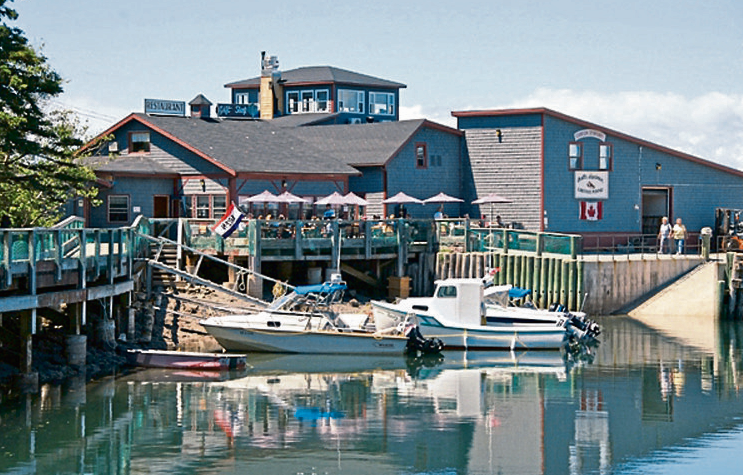
There are several spots in Halfiax for casual evening dining but for something a little more special, visit the swanky Five Fisherman restaurant in Argyle Street. There, I ate a delightful scallops cerviche served with crunchy toast followed by a classic lobster dish served, simply, with potatoes and vegetables. Just a taster of what this bustling establishment has to offer.
It’s also worth driving south for an hour to Peggy’s Cove, a beautiful spot where a graceful lighthouse sits on smooth, wave-worn granite with views across the Atlantic.
A wood-built restaurant there serves plenty more luscious lobster. The quaint harbour area below is made up of small, wooden fishing sheds and colourful boats – a great place for photographs.
After two days in Halifax we head north-west in our black Volkswagen rental car for the town of Urbania and some tidal bore rafting on the Shubenacadie River. There are several businesses running tours on the river but we had a fantastic time with the Tidal Bore Rafting Resort.
After a hot shower, we feel refreshed enough to get back on the road and travel south towards the quiet university town of Wolfville. On the way you will discover attractions such as the Grand Pre National Historic Site – one of three Unesco heritage sites in Nova Scotia.
You can also visit the Domaine de Grand Pre winery, one of the oldest in the province and home to one of the best wine restaurants in the world, Le Caveau. Nova Scotia’s agricultural region – the Annapolis Valley – is fast becoming known as “wine country,” with about 22 grape growers nurturing over 400 acres of vines producing award-winning wines.
Our next overnight stop is the seafaring town of Lunenburg, a Unesco world heritage site famous for its green, blue, pink, orange and yellow-painted buildings – and home port to the Bluenose II tall ship.
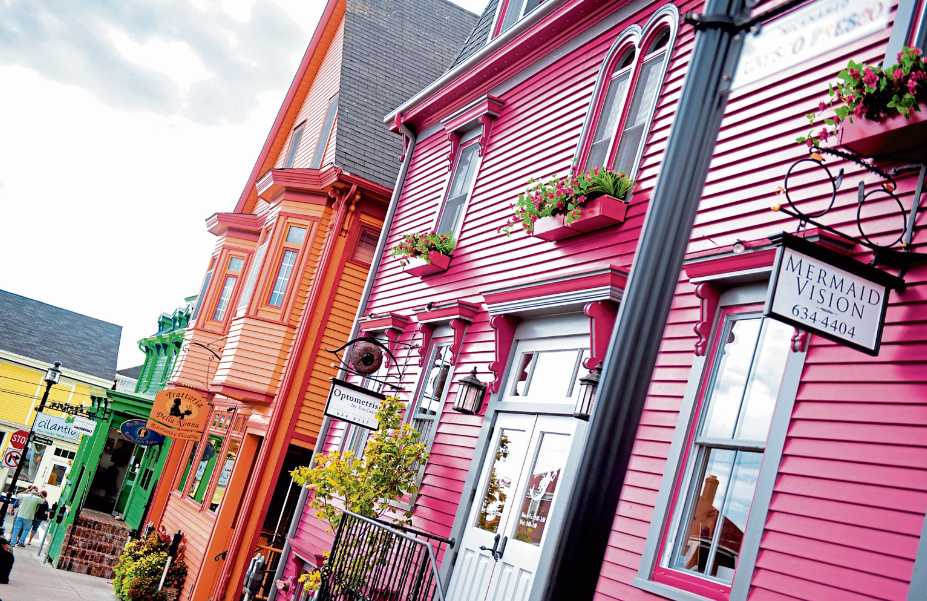
The town tour is well worth doing and our guide was excellent. You’ll hear about how the settlement was planned by the British but grew with the arrival of German and Swiss settlers, rising to become a major centre in Canada for fishing and shipbuilding.
You’ll discover the oldest operating Canadian inn, the Lennox Tavern Inn, and hear of the mystery behind a blaze which burned down St John’s Anglican Church on the night of Halloween in 2001.
After our stay at a charming hotel with sea views, we drive a few miles south-east to Blue Rocks, a tiny village identified by its blue slate landscape topped with yellow moss. There, you can take a sea kayak tour and meander through the maze of slate islands and admire this beautiful landscape. Our guide, Jen, of Pleasant Paddling, takes us on a 4.5-mile kayak but there are options for longer trips.
It wasn’t officially part of our road trip but, if you have more time, some of the locals in Halifax also suggested driving north to the scenic Cape Breton Island.
The Cabot Trail, named after Italian explorer John Cabot, is said to showcase some of the best of the island, including its national park.
A must here is the park’s Skyline Trail, a five-mile hiking route with a boardwalked pathway which clings to the cliffs 1,000 ft above the ocean. There, you’ll find warning signs about what to do if you come across moose, bears or coyotes.
Nearby you’ll find the sprawling town of Inverness, NS, which looks out over the crystal clear waters of the Gulf of St Lawrence and is home to Canada’s only authentic links golf course, Cabot Links.
If you want to plan a specific route, explore the Nova Scotia Good Cheer Trail, sampling locally produced wine, beer and spirits from any number of 50 locations across the province. From Yarmouth to Cape Breton, the trail weaves through stunning landscapes, heritage sites, beaches, farmlands and cities and offers a mix of tours, tastings and special events.
Another option is the Nova Scotia Seafood Trail, which brings together a collection of restaurant, retail and fisheries experiences highlighting Nova Scotia’s endless amount of top-quality seafood products.
The trail is further subdivided into four sections – one each for chowder, lobster, oysters and fish and chips.
Full details of both trails can be found on the Nova Scotia Tourism website atwww.novascotia.com
The kayaking adventure was the final activity on our road trip and we managed to finally get some sun. Hitherto, the weather had been typically Scottish – cold and blustery. Reluctantly, we left Blue Rocks and drove north on the last stint of our journey towards the airport.
If you’re looking for a relaxing destination with plenty of adventure and scenery, mixed in with cultural and historic attractions, then Nova Scotia is a good choice.
However, I felt that five days was not enough to see all of what this wonderful province has to offer – so rent a car for at least a week.
